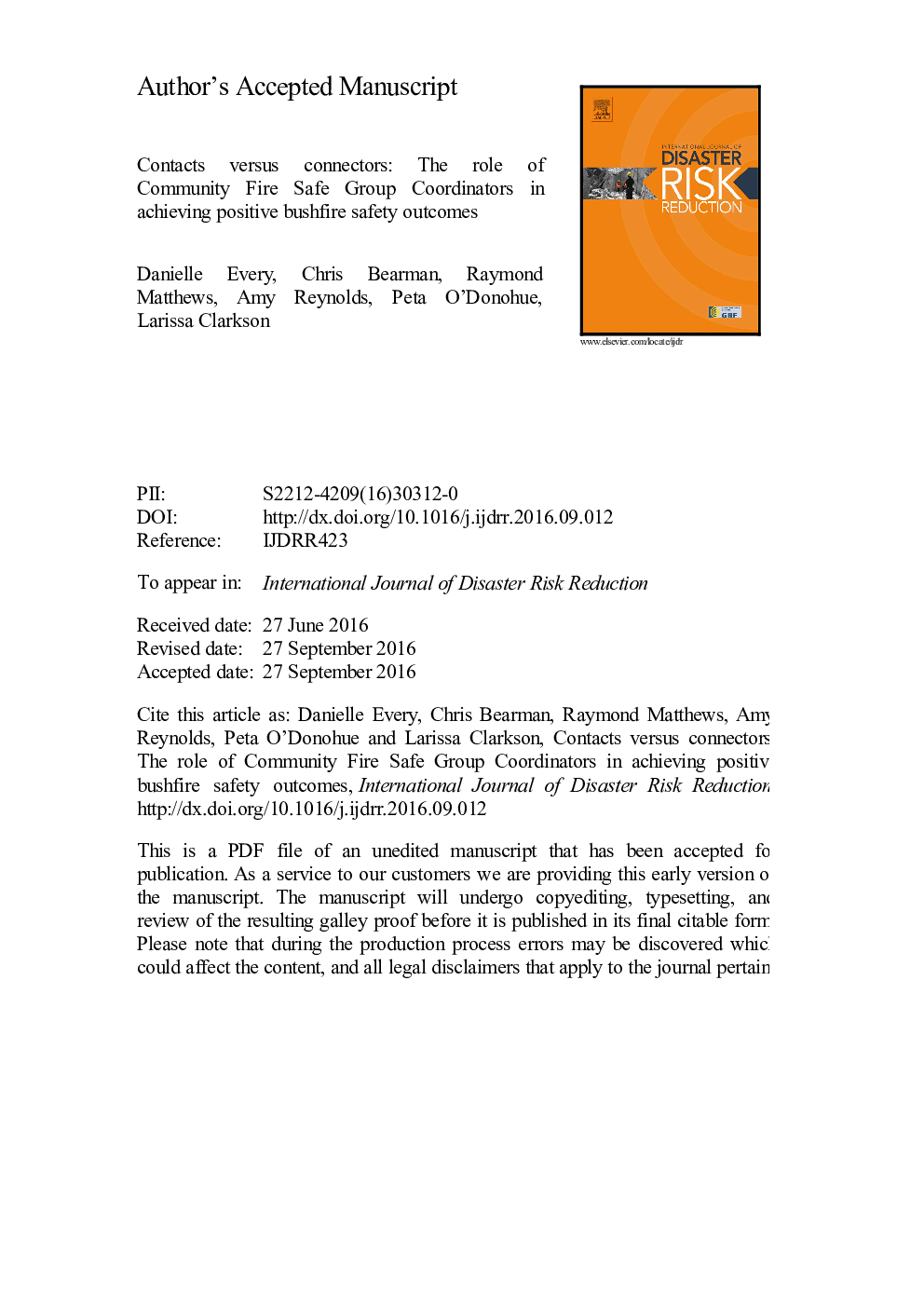| Article ID | Journal | Published Year | Pages | File Type |
|---|---|---|---|---|
| 7472480 | International Journal of Disaster Risk Reduction | 2016 | 24 Pages |
Abstract
Shared responsibility for bushfire preparedness includes self-reliant communities with the skills, knowledge and ability to minimize the impacts of bushfires on their homes, properties and community. Community preparedness groups are a potentially effective way to achieve this self-reliance. Previous research shows that these groups increase people's knowledge and awareness of risk, their planning and preparations, and community cohesion and collaboration. However, these are not outcomes for all groups in all places. Groups face a perennial problem of low participation and 'buy in' from the local area due in part to individual differences in the desire to be part of a group, low levels of risk awareness, community turbidity, and low social capital. This paper proposes that the skills and characteristics of the group coordinator in responding to and overcoming these challenges are key to a group's longevity, collaboration and success. Using interviews and a survey with Community Fire Safe group coordinators and members affected by the 2015 Sampson Flat fire in South Australia, we found the key elements of successful coordination were active outreach to existing neighbourhood residents, newcomers and those 'not into groups' using face to face and personalized communication adapted for different people's needs. This active, determined persistence in communicating bushfire safety was motivated by an understanding that low interest can be overcome and that overcoming it is the key role of the group coordinator. Training for coordinators in the individual and group processes underpinning behavior change, in personalized communication, and adapting materials for diverse groups is likely to improve group outcomes.
Keywords
Related Topics
Physical Sciences and Engineering
Earth and Planetary Sciences
Geophysics
Authors
Danielle Every, Chris Bearman, Raymond Matthews, Amy Reynolds, Peta O'Donohue, Larissa Clarkson,
